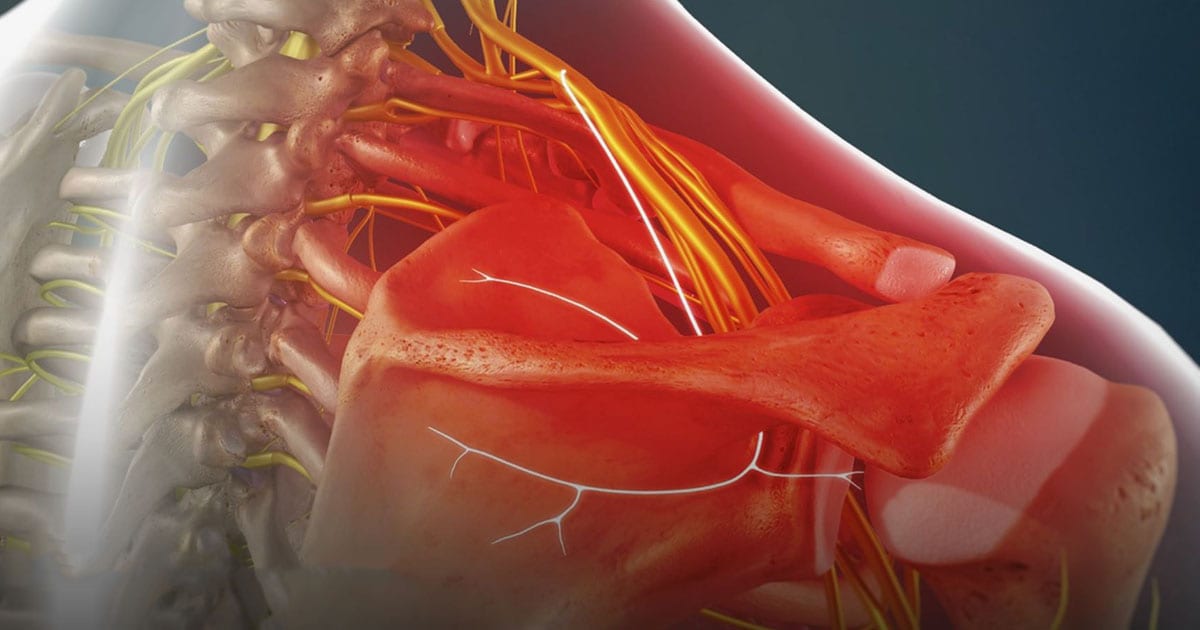Shoulder pain is one of the most common forms of joint pain, affecting as many as 30% of people at some point in their lives. A common cause of shoulder pain is a condition called suprascapular neuropathy - irritation of the suprascapular nerve, a major nerve which branches from the cervical spine and through the shoulder.
The suprascapular nerve is vulnerable to compression. Patients with a poorly-shaped shoulder blade or cysts in the shoulder may experience pain due to the compression of the suprascapular nerve. Sports involving overhead motion, such as tennis, swimming, and weight lifting, may result in traction injury (over-stretching) to the suprascapular nerve.
Other types of shoulder pain can be caused by arthritis, bursitis, or shoulder injuries like impingement syndrome, rotator cuff tears, frozen shoulder, or labral tears. Depending on the cause, patients may experience different levels of pain in the shoulder. It may be dull or sharp, gradual or sudden, and may only occur when carrying out a certain activity. Shoulder discomfort may also be accompanied by stiffness, swelling, numbness, or weakness. Some patients may experience shoulder weakness without feeling pain.
How is shoulder pain treated?
Patients suffering from acute shoulder issues may benefit from a number of non-invasive treatments. A physician may prescribe a non-steroidal anti-inflammatory drug (NSAID) to reduce swelling and relieve pain while certain injuries heal. Physical therapy may also help specific types of pain in the shoulder.
Suprascapular neuropathy can create chronic pain. In these cases, radiofrequency ablation (RFA), a minimally-invasive treatment option, has been proven to provide relief for those suffering from persistent shoulder pain. Patients who have responded positively to a nerve block injection may be ideal candidates for RFA treatment. Dr. Robertson with the Segura Neurology and Pain Center specializes in the treatment of suprascapular neuropathy through the use of RFA.
What does RFA treatment of the shoulder entail?
The patient is placed on their stomach and may be mildly sedated. The physician then numbs the skin surrounding the suprascapular nerve of the shoulder. Using real-time x-ray guidance called fluoroscopy, the physician guides the RFA needle to the irritated nerve. Because of its location in the shoulder, the suprascapular nerve is usually easy to access. Once located, an electrode releases a small electric current into the suprascapular nerve, ensuring that the correct nerve has been located. The electrode then applies a heat lesion to the nerve, preventing it from sending pain signals to the brain.

